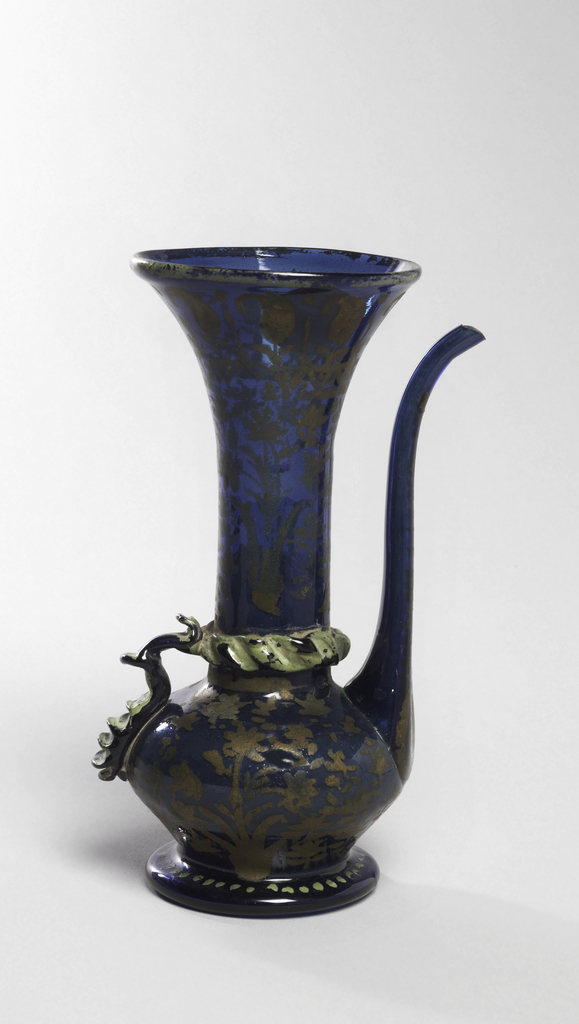There are 2 other images of this object. This image is in the public domain (free of copyright restrictions), and as such we offer a high-resolution image of it. See our image rights statement.
See more objects with the color darkslategrey darkslategrey darkslategrey or see all the colors for this object.
Object Timeline
|
1919 |
|
|
2012 |
|
|
2013 |
|
|
2015 |
|
|
2025 |
|
Ewer (Iran)
This is a ewer. It is dated 17th–18th century and we acquired it in 1919. Its medium is gilt and enameled glass. It is a part of the Product Design and Decorative Arts department.
A Look at Safavid Glass
Looking at this colored glass ewer that was produced in Iran sometime in the seventeenth to early eighteenth century, during the late Safavid dynasty, I cannot help but be reminded of a colored glass wine bottle. Coincidentally, this vessel most likely would have been used for wine as well, since much of the glass production in Safavid Iran was linked to the wine industry in Shiraz. The Shirazi wine industry is credited with spurring glass production in Iran because vessels were needed to store and consume the large quantities of wine that were being produced, and glassmaking became a secondary industry there. As a result, the Safavids were not known for their glassmaking (as were their contemporaries in the Middle East—the Mughals in India and the Ottomans in Turkey), and they were unable to achieve perfectly clear glass, resulting in the production of colored glass vessels executed mostly in blue or aubergine. These pieces are also characterized by simple designs and graceful molded shapes.
This piece from Cooper-Hewitt’s collection is a unique example of glass from Safavid Iran because of its gilt and enameled surface decoration, which can be seen throughout the piece. These rich designs paired with the vessel’s shape can be attributed to the merging of Middle Eastern and European ornamental styles. The Murano glass industry was also incredibly influential on Iran’s production of glass. Many pieces of Venetian glass were being imported to Iran and many Italian glassmakers lived and worked in Iran at that time.
This object was featured in our Object of the Week series in a post titled A Look at Safavid Glass.
This object was
donated by
Rodman Wanamaker.
It is credited Gift of Rodman Wanamaker.
- Ewer (Iran)
- blown glass, applied blown glass decoration.
- Gift of Rodman Wanamaker.
- 1919-24-86
Its dimensions are
H x diam.: 17.1 x 8.5 cm (6 3/4 x 3 3/8 in.)
Cite this object as
Ewer (Iran); gilt and enameled glass; H x diam.: 17.1 x 8.5 cm (6 3/4 x 3 3/8 in.); Gift of Rodman Wanamaker; 1919-24-92

